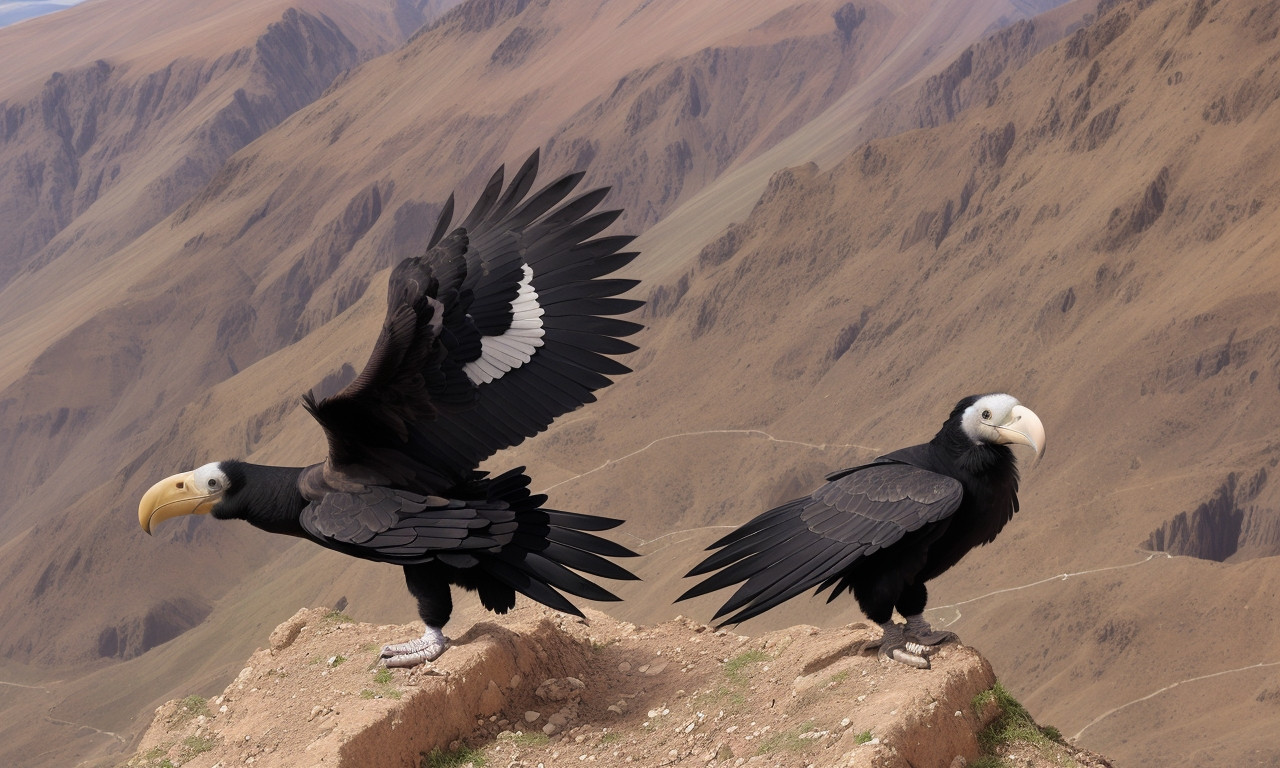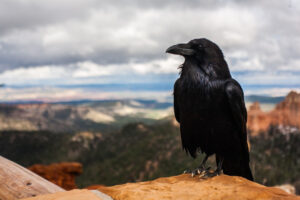The Andean Condor is a symbol of strength and freedom, its impressive wings carving through the skies with a grace that belies its enormous size. This majestic bird has been an object of reverence across various cultures, often portrayed as the embodiment of power and resilience. With the sun gilding their expansive wings, Andean Condors take to the heavens, offering us a glimpse into the true splendor of the avian world.
Unveiling the Majestic Andean Condor
The Grandeur of the Andean Skies
The Andean Condor (Vultur gryphus) is not only the largest flying bird in the Western Hemisphere but also a paramount symbol of the mountain landscapes it calls home. With a wingspan stretching up to an astonishing 3.3 meters (10 feet), their silhouette against the expanse of the Andean skies is nothing short of awe-inspiring.
A Deep Dive into Their Habitat
These birds are native to South America, claiming dominion over vast territories that span from Venezuela to the southernmost tip of the continent. The Andean Condor prefers rugged terrains, utilizing the high altitude and thermal updrafts to soar gracefully with minimal effort. They typically nest on inaccessible rock ledges, hundreds of meters above the ground, ensuring safety for their offspring.
Related article; condor birds of prey
Behavioral Traits and Diet
A Skyborne Sentinel’s Diet
Contrary to their powerful appearance, these condors lead a largely scavenger lifestyle. Their diet primarily consists of carrion, which they locate through their unparalleled flight and keen eyesight. By consuming the deceased, Andean Condors play a crucial role in their ecosystems, serving as natural janitors that help to prevent the spread of disease.
Related article; native birds of arkansas
Social Structure and Mating Rituals
A social bird, the Andean Condor often gathers in groups, especially when a sizeable food source is discovered. These gatherings are not only a feeding opportunity but also serve as social interaction spaces. When it comes to mating, their rituals include an intricate dance of bold postures and movements, displaying their impressive wingspan and control over flight.
Related article; song birds of arkansas
The Conservation Status of Andean Condors
A Species in Peril
Despite their grandiosity, Andean Condors face numerous threats, including poisoning, habitat loss, and hunting. Their conservation status has been a rollercoaster of highs and lows, with some areas reporting a bleak outlook for their population numbers. Conservation efforts have, therefore, become imperative to ensure these birds continue to grace the Andean landscapes.
Related article; water birds of arkansas
Strategies for Their Survival
To protect these majestic creatures, conservation programs focus on areas such as breeding, education, and legislation. Captive breeding and reintroduction projects work in tandem with community outreach to reduce the human threats facing these birds. Legal frameworks also play a pivotal role in protecting their natural habitats and providing them with a sanctuary free from human encroachment.
Related article; backyard birds of arkansas
Understanding the Andean Condor’s Role in Culture
Mythology and Symbolism
The Andean Condor is deeply ingrained in the cultural fabric of the Andean people. It is revered in mythology as a messenger of the gods, or even as a god in its own right. The bird’s symbolic presence has transcended through centuries, embodying the concepts of life, health, and longevity.
Related article; small birds of arkansas
Modern-day Cultural Significance
In today’s context, the Andean Condor continues to be a source of inspiration and national pride. Various countries have adopted it as a national symbol, illustrating its unyielding grip on the cultural consciousness of South American nations. It is often depicted in art, literature, and emblems, highlighting its status as one of the most respected avian figures in the New World.
Related article; exotic birds in guatemala
The Majestic Flight of Andean Condors
Mastering the Skies
Andean Condors are a sight to behold as they navigate the thermals – rising warm air currents – with an artful precision that has been the subject of many a photographer and birdwatcher’s attention. Their flight technique showcases the epitome of energy efficiency, as they capitalize on the winds and updrafts to travel vast distances without flapping their wings.
Related article; black birds in guatemala
The Physics of their Flight
Understanding the mechanics of the Andean Condor’s flight is to delve into a world where physics and biology blend seamlessly. With their wide wings and strong muscles, they leverage the dynamic air currents to stay aloft, demonstrating the potential of evolution’s designs. It is as if the condors are conducting an ongoing symphony with nature, each movement timed with the natural rhythms of the Earth.
A Closer Look at Reproduction and Lifespan
The Cycle of Life
The Andean Condor’s reproductive cycle is as fascinating as it is challenging. These birds have one of the lowest reproductive rates among bird species. They mate for life, showing a loyalty that is heartwarming, and produce only one egg every couple of years. Such a low fecundity rate makes their population vulnerable and highlights the importance of conservation efforts.
Reaching Impressive Ages
In the wild, an Andean Condor can live upwards of 50 years, with captive individuals potentially reaching 70. The longevity of these birds is a testament to their resilience and adaptability. Yet, as much as age bestows wisdom on these venerable beings, it also compounds the challenges in bolstering their numbers in the wild.
Challenges and Solutions: Conservation in Action
The Path to Recovery
Conservation of the Andean Condor demands a multifaceted approach. Integrating habitat preservation with anti-poisoning campaigns, banning harmful pesticides, and enforcing anti-poaching laws, are all essential to ensure their survival. Furthermore, engaging local communities in ecotourism can provide economic incentives to coexist peacefully with these birds.
The Role of Education and Awareness
Educating people, especially the youth, about the importance of the Andean Condor is crucial for long-term conservation success. Awareness campaigns can dispel myths that lead to fear or hostility towards these birds, replacing ignorance with appreciation. Recognizing the condors as keystone species can foster a sense of stewardship and responsibility towards the feathered giants.
Experiencing the Magnificence of Andean Condors
Where to Witness These Majestic Birds
For those aspiring to witness the Andean Condor in its natural habitat, the national parks and reserves dotting the Andean range offer the best vantage points. Places like Colca Canyon in Peru and Los Glaciares National Park in Argentina are renowned for their condor-viewing opportunities. Seeing them in flight is an experience that resonates on a profound level, striking chords of wonder and reverence.
Ethical Birdwatching Practices
When engaging in birdwatching, always maintain a respectful distance to prevent any undue stress to the condors. Utilize binoculars or telephoto lenses to appreciate the minutiae of their plumage and behavior. Adhering to ethical practices ensures that we can continue to admire the Andean Condor’s majesty without disrupting their way of life.
In the grand tapestry of the natural world, the Andean Condor stands out as a remarkable thread, woven with the hues of might, resilience, and grace. These birds are not just winged marvels but are also storytellers, their very existence narrating an ancient saga of the Andean realm. They compel us to look upwards and remind us of the freedom and beauty that exists above. Protecting them is not just about saving a species; it’s about preserving the legacy of the skies, ensuring that future generations can look up and find inspiration in the graceful dance of the Andean Condors, as they continue to carve their path across the heavens.




